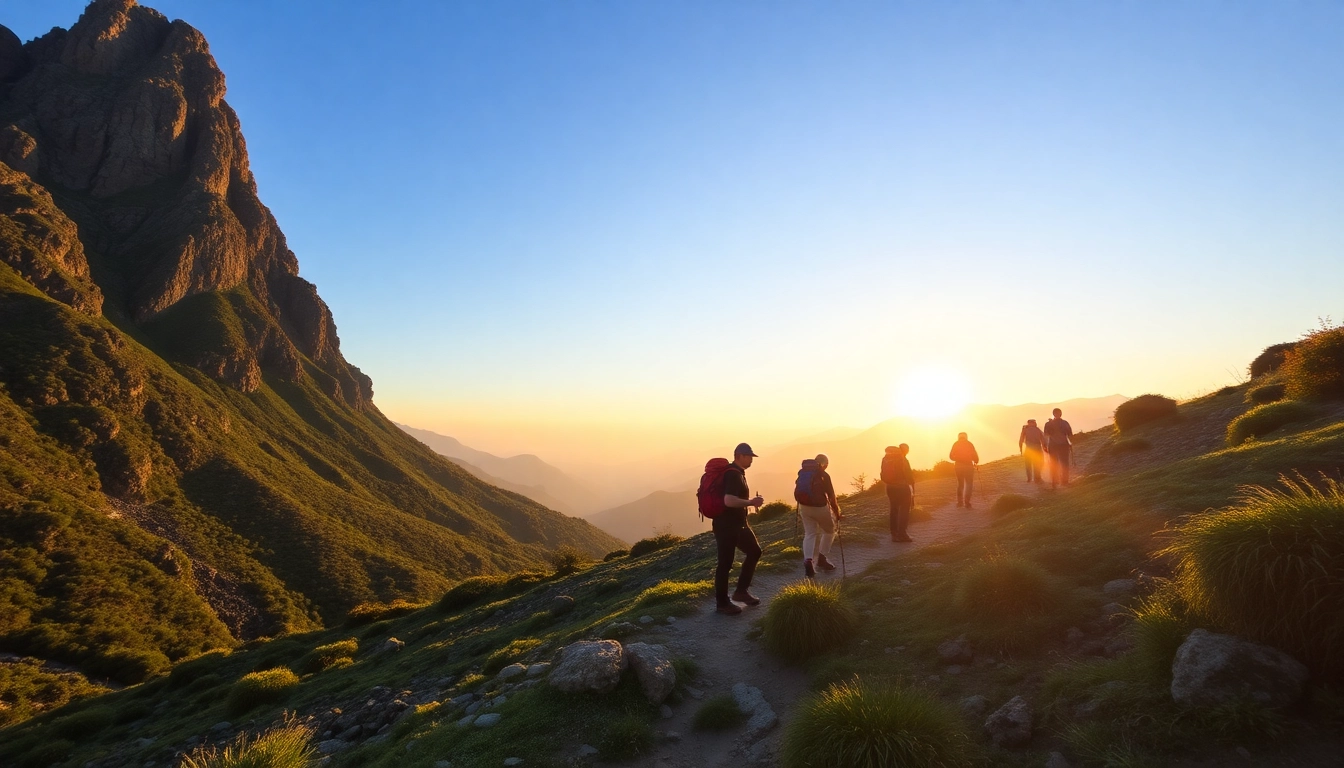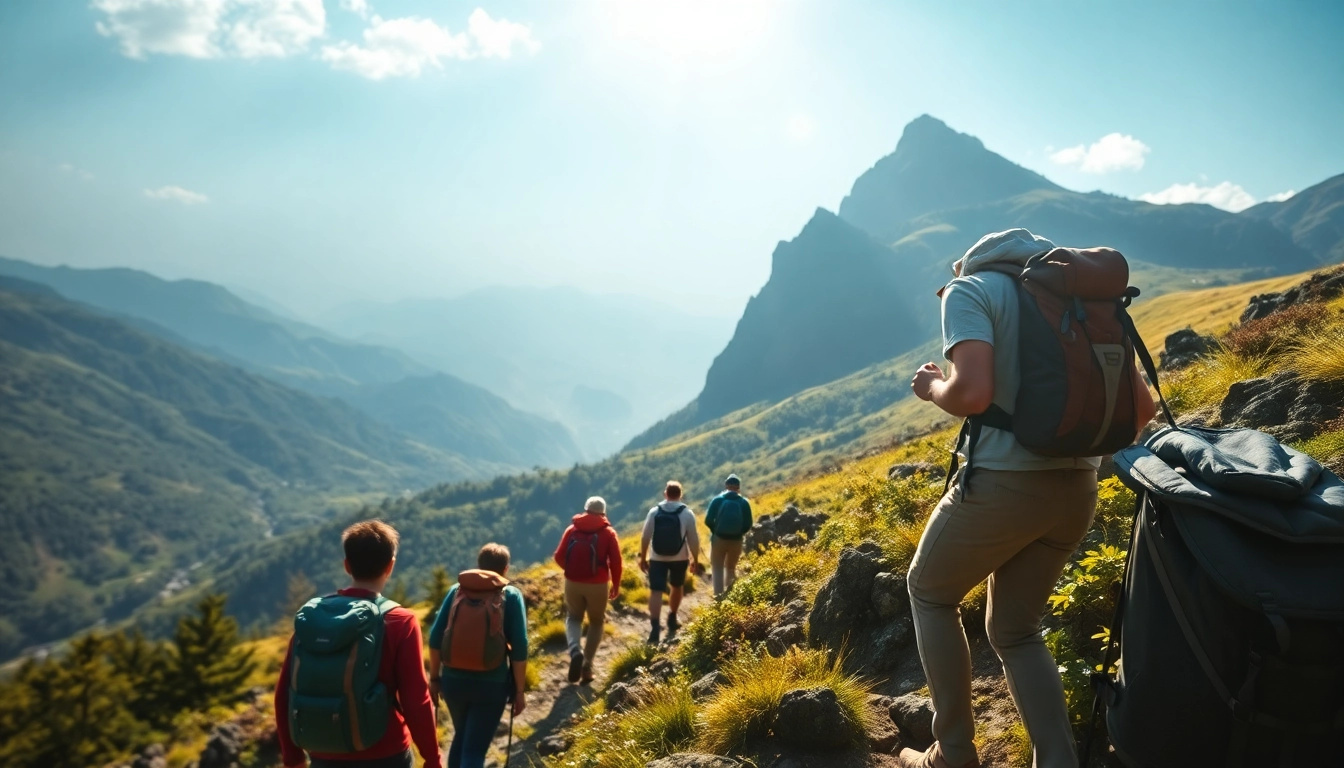Understanding Trekking: Definition, Types, and Popular Routes in Indonesia
What is trekking? Key differences from hiking and walking
Trekking is an adventurous activity that involves long-distance walking through challenging natural landscapes, often spanning multiple days. Unlike casual walking or hiking, trekking demands a higher level of physical endurance, mental resilience, and meticulous planning. It takes place in rugged terrains—mountains, forests, and remote wilderness—often away from well-marked trails. For those new to the concept, trekking represents more than a leisurely stroll; it is a comprehensive exploration of nature’s most remote and pristine environments.
This activity is distinguishable from hiking, which is typically done over shorter distances in less demanding settings. Hiking is often a recreational activity suitable for weekends and accessible terrains, whereas trekking is usually a multi-day endeavor, requiring thorough preparation and specialized gear. As highlighted in multiple sources, trekking involves traversing through challenging terrains that necessitate endurance, strategic pacing, and survival skills, making it a fundamentally different experience from casual or even strenuous hiking.
Types of trekking experiences available in Indonesia
Indonesia, with its vast archipelago and diverse topography, offers an array of trekking experiences suited for all adventure levels. Recognized types include:
- Mountain trekking: Exploring active and dormant volcanoes such as Mount Rinjani in Lombok or Mount Merapi in Java. These treks often require technical skills and physical endurance.
- Rainforest treks: Navigating dense jungles like Borneo’s Gunung Mulu National Park, where trekkers encounter rich biodiversity, waterfalls, and caves.
- Cultural trekking: Combining hiking with visits to remote villages and ancient temples, such as in Bali’s rice terraces or Sumatra’s tribal regions, offering a cultural immersion alongside physical activity.
- Coastal and island treks: Trekking along pristine beaches and remote islands like the Mentawai Islands or Komodo Island, offering a mix of trekking and marine activities.
Each type provides unique challenges and rewards, catering to both seasoned trekkers and beginners eager to delve into Indonesia’s natural beauty.
Top trekking destinations across Indonesian islands
Indonesia’s numerous islands serve as a treasure trove for trekking adventures. Some of the most renowned destinations include:
- Mount Rinjani, Lombok: Indonesia’s second-highest volcano, Rinjani offers a challenging multi-day trek with stunning crater lakes, hot springs, and panoramic views.
- Gunung Kerinci, Sumatra: The highest volcano in Southeast Asia, surrounded by lush rainforests teeming with wildlife, making it a biologically rich trekking site.
- Bromo Tengger Semeru National Park, Java: Famous for sunrise views over volcanic landscapes and the active Mount Semeru, providing accessible yet spectacular trekking routes.
- Komodo Island: Trek through savannahs and tropical forests to encounter the komodo dragons, combining adventure with wildlife spotting.
- Papua’s Baliem Valley: Trekking here unfolds indigenous cultural encounters amidst spectacular mountain scenery and tribal villages.
These destinations exemplify Indonesia’s diversity and appeal to trekkers seeking both adventure and cultural immersion.
Preparing for a Trekking Adventure in Indonesia
Physical and mental preparation for trekking in rugged terrains
Adequate preparation is fundamental to enjoying a safe and successful trekking experience. Physically, a solid baseline of cardiovascular fitness—achieved through regular aerobic exercises, such as running, cycling, or swimming—is recommended. Strength training focusing on legs, core, and endurance can significantly enhance performance and reduce injury risks. Mentally, trekkers should cultivate resilience, patience, and adaptability to cope with unpredictable weather, difficult terrain, and potential setbacks.
Engaging in preparatory hikes gradually increasing in distance and difficulty can help simulate real conditions. Additionally, studying the route, understanding local climate patterns, and mental visualization techniques bolster confidence and readiness.
Essential gear and safety equipment for trekking trips
The right gear transforms a challenging trek into a manageable adventure. Essential items include high-quality hiking boots with strong ankle support, moisture-wicking clothing, layered outfits for varying temperatures, and a durable backpack. Safety equipment encompasses a first aid kit, navigation tools (compass, GPS device), headlamp, waterproof gear, and a multi-tool. International trekking standards also recommend carrying sufficient water purification systems, energy-dense snacks, and weather protection like rain jackets and sunblock.
For multi-day treks, lightweight tents, sleeping bags, and portable stoves become necessary. Always tailor pack content to terrain, duration, and expected weather conditions.
Planning routes, permits, and accommodations for multi-day treks
Effective planning begins with selecting appropriate routes based on fitness levels and interests. Local authorities often require permits—such as the Rinjani National Park permit—so securing these well in advance is crucial. Consult local guides or trekking agencies experienced in Indonesian terrains for route accuracy, safety updates, and logistical support.
Accommodation options range from simple huts and campsites to more sophisticated lodges. For remote areas, carrying portable camping gear ensures flexibility. Incorporating buffer days and contingency plans for unforeseen delays is vital in multi-day trips.
Executing a Safe and Enjoyable Trekking Trip
Best trekking practices and environmental conservation tips
Responsible trekking emphasizes preserving the pristine qualities of Indonesia’s landscapes. Follow Leave No Trace principles: carry out all waste, avoid damaging vegetation, stick to established trails, and minimize noise. Respect wildlife and cultural sites, fostering positive interactions with local communities and minimizing environmental impact.
Trekking with a guide or in organized groups enhances safety and ensures adherence to conservation standards. Supporting eco-friendly accommodations and local businesses further contributes to sustainability.
Handling emergencies and navigation in remote areas
Remote terrains pose inherent risks such as sudden weather changes, altitude sickness, or injuries. Preparedness involves carrying a comprehensive first aid kit, knowing basic first aid procedures, and having reliable communication devices or satellite phones. Navigation skills—use of compass, GPS, and route maps—are critical, especially when trail markings are scarce.
Establishing check-in points or GPS waypoints with trusted contacts before the trek provides safety buffers. Always inform someone about your itinerary and estimated return.
Respecting local cultures and community engagement during treks
Indonesia’s diverse cultures enrich trekking experiences. Engage respectfully with local communities—learn cultural norms, seek permission before photography, and support locally owned businesses. Your conscientious attitude fosters positive relationships and helps promote sustainable tourism.
Participating in community-led treks or cultural exchanges can deepen understanding and provide economic benefits to indigenous populations.
Maximizing the Benefits of Trekking for Health and Well-being
Physical health benefits of regular trekking activities
Consistent trekking improves cardiovascular health, boosts muscular strength, and enhances flexibility. It aids in weight management, improves bone density, and increases stamina. The activity also promotes better sleep patterns and metabolic health, especially when combined with a balanced diet.
Regular exposure to varied terrains challenges the entire body, fostering functional fitness and reducing the risk of chronic illnesses such as hypertension and diabetes.
Mental clarity and stress relief through immersion in nature
Trekking acts as a natural stress reliever; immersion in nature reduces cortisol levels and promotes mental relaxation. The tranquil environment, fresh air, and physical activity help clear the mind, improve focus, and elevate mood. Scientific studies demonstrate that time outdoors positively impacts mental health, alleviating anxiety and depression.
The experience of overcoming physical challenges and witnessing breathtaking landscapes cultivates mindfulness and a sense of achievement, essential for psychological well-being.
Building lifelong skills and connections through trekking challenges
Trekking develops resilience, problem-solving skills, and teamwork. Navigating difficult terrains, managing resources, and adapting to unforeseen circumstances foster leadership and independence. Shared experiences forge bonds among trekkers, creating supportive communities and lifelong friendships.
These skills are transferable to many life situations, emphasizing the activity’s role in personal growth and social enrichment.
Advanced Trekking Tips: Enhancing Experience and Sustainability
Using trekking poles and advanced gear for tough terrains
Trekking poles are invaluable aids in reducing joint stress, maintaining balance on steep ascents or descents, and conserving energy. Expert trekkers often use adjustable, lightweight poles that can double as makeshift tools or gear holders.
Advanced gear includes layered technical clothing, high-capacity hydration packs, portable GPS and navigation devices, and lightweight but durable safety equipment. Learning how to properly utilize and maintain these tools enhances safety and efficiency.
Eco-friendly trekking practices to preserve Indonesian landscapes
Sustainable trekking involves minimizing environmental footprints. Use biodegradable products, avoid single-use plastics, and adhere strictly to designated trails. Supporting eco-certified guides and accommodations encourages preservation efforts.
Participating in conservation initiatives during treks—such as trail restoration or reforestation programs—can contribute positively to Indonesia’s ecosystems.
Monitoring progress and measuring trekking success
Keeping a detailed trekking journal, tracking distance, altitude gain, and health metrics provides insight into personal progress. Using GPS tracking apps can help post-trip analysis, motivate continuous improvement, and evaluate trail difficulty.
Celebrating milestones and reflecting on experiences deepen appreciation and encourage ongoing adventure pursuits.

